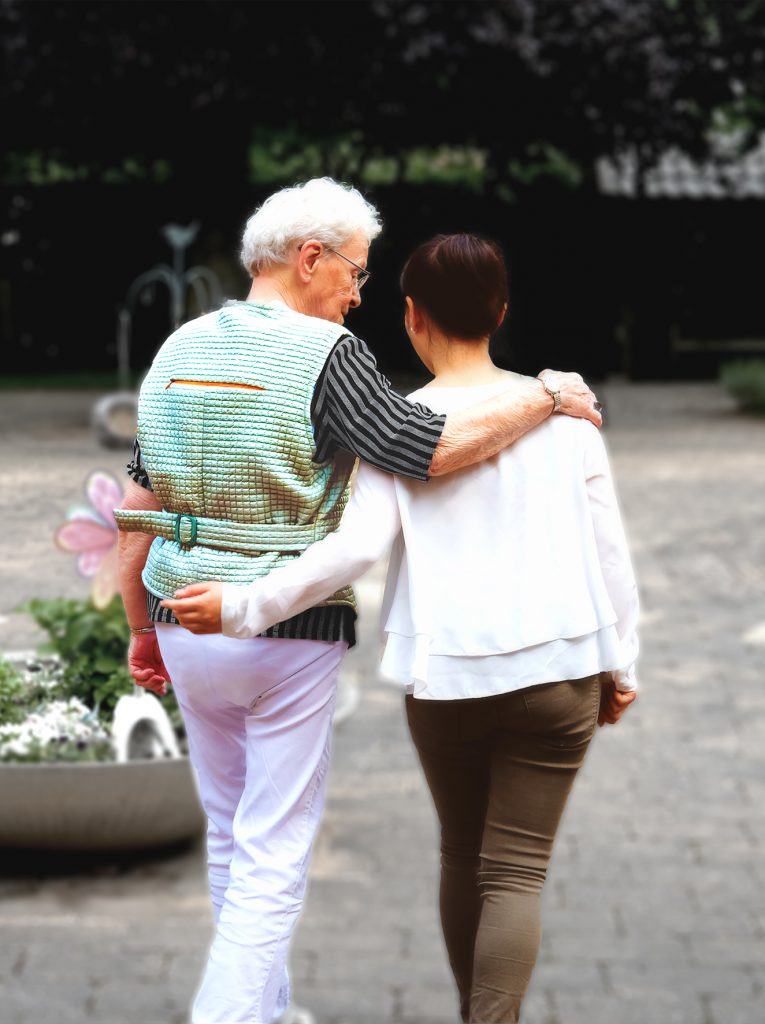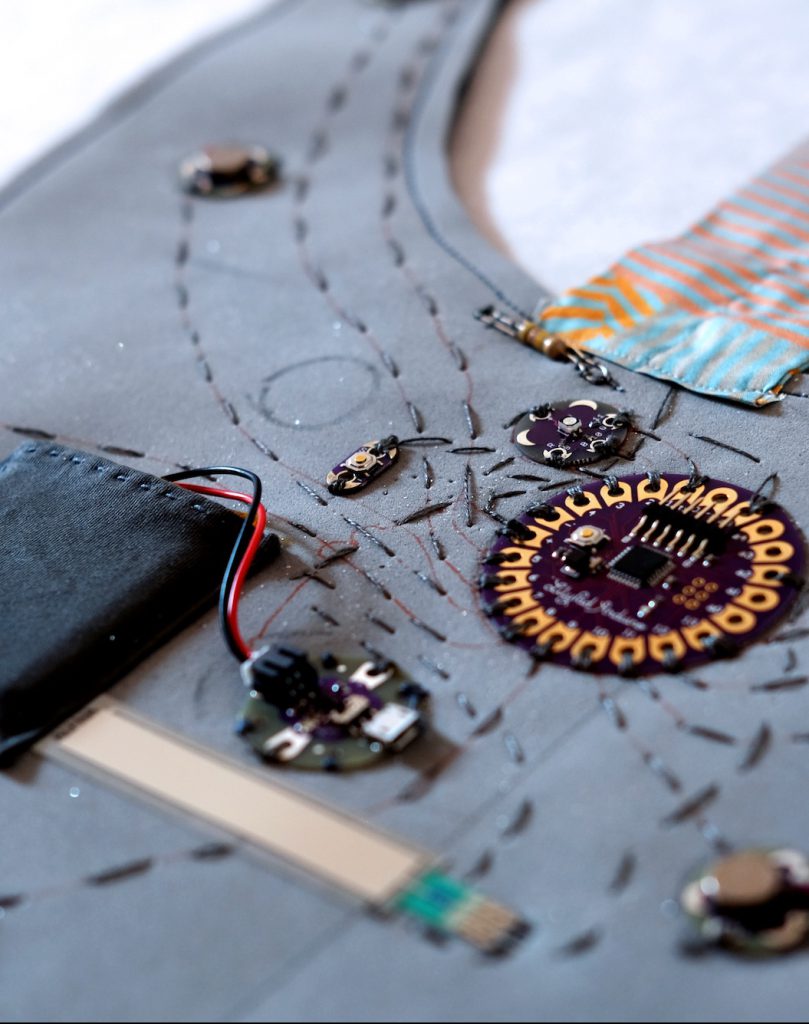
HAGU
A Smart Vest for People with Dementia
Design for Dementia | Technology and realization, math data and computing, user-centered design
Stakeholder: Kempenlef
Team: Jing-cai Liu, Ayesha Nabila, and Silvia Cazacu
Background
Dementia is a general term used to describe a decline in one’s mental capabilities severe enough to interfere with normal daily activities. It is called a general term because it covers various neurodegenerative diseases such as Alzheimer’s diseases which accounts for almost 70% of cases, followed by vascular dementia which accounts for almost 20% of cases and other similar diseases [1]. In the majority of cases, dementia is not experienced alone: the people around the patient such as spouses, children, and other relatives are affected by it in different ways, however, all experience a gradual and consistent loss when comparing their loved one with the person they used to be. Moreover, for a person that does not have specialized expertise involving dementia the experience of taking care of a person living with dementia can become a serious burden both physically and mentally [2].
Design
Hagu is a vest that tightly enfolds its owner giving the sensation of being hugged. Moreover, without necessarily knowing, the person living with dementia will wear an intelligent piece of clothing that reads their body’s behavior, interprets it and when it senses distress, it starts giving a warming hug.
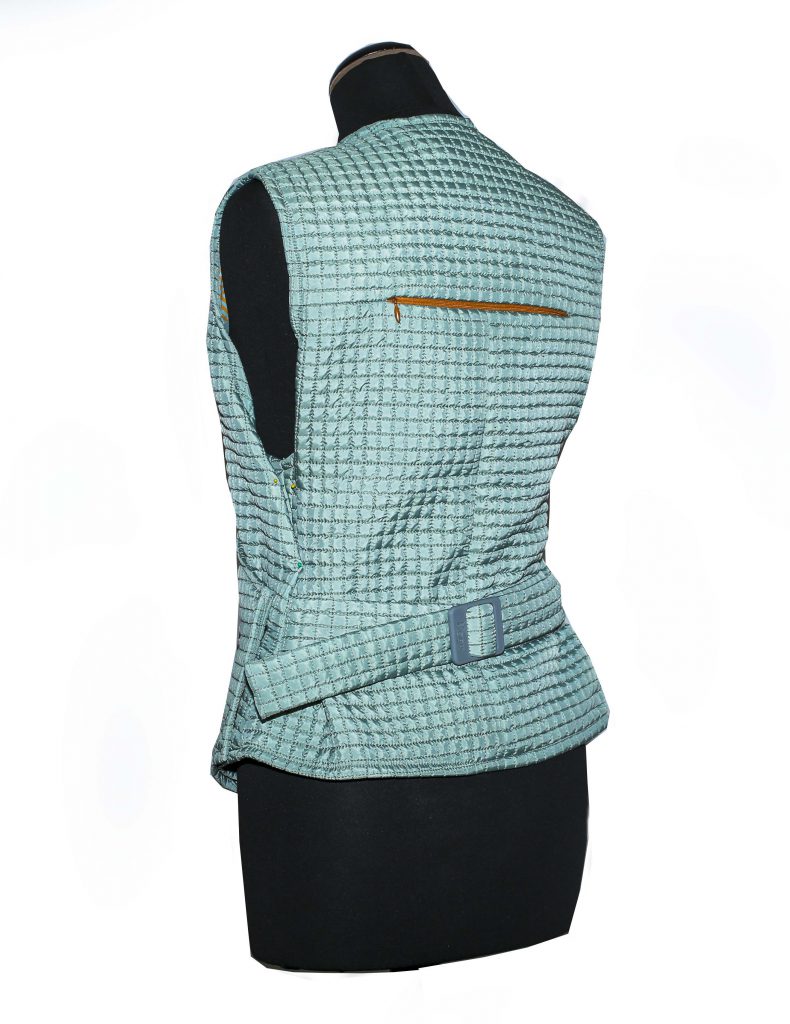
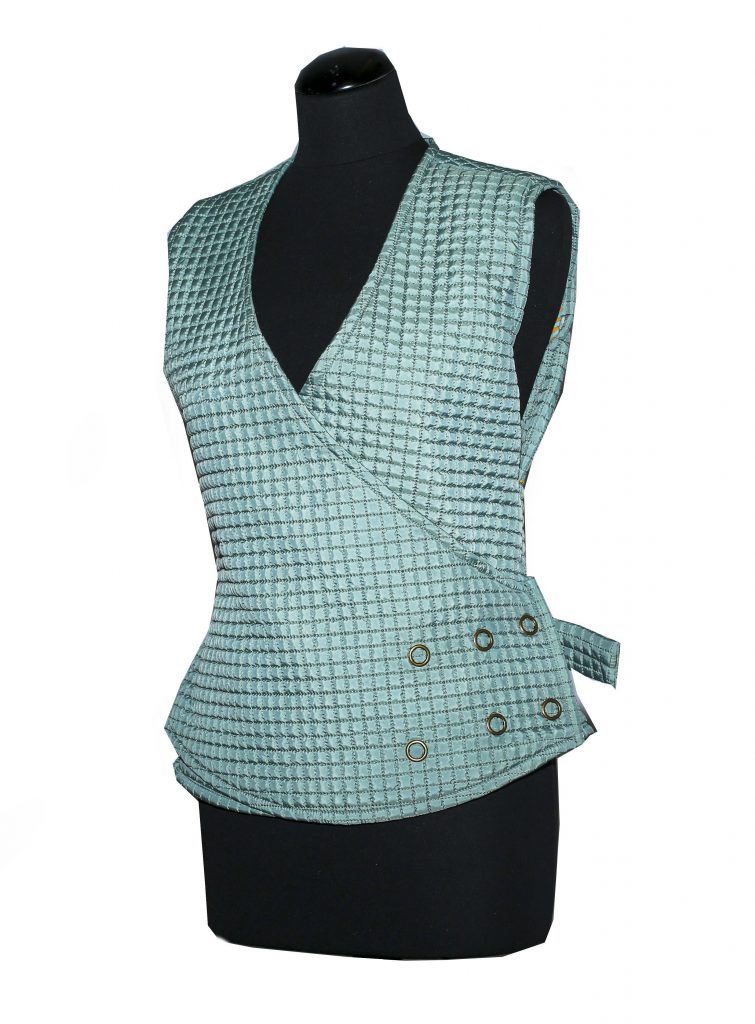
First Iteration
An array of initial ideas were generated based on the chosen subject: incorporating sensory stimulation in the design approach, such as through light, sound, smell, and touch. Next, we further investigated the possibilities for interaction between the product (materials, interface, and functions) and the user (as input for interaction and what the effects the result would be), this process also persisted in the consequent iteration. The team explored a range of materials that provides comfort or used as the cushioning for the wearable from foam, gel, air, and sand or rice.
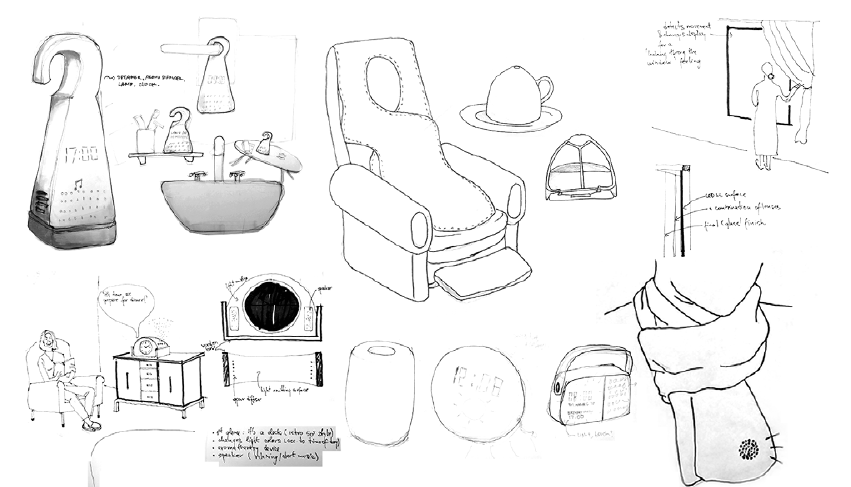
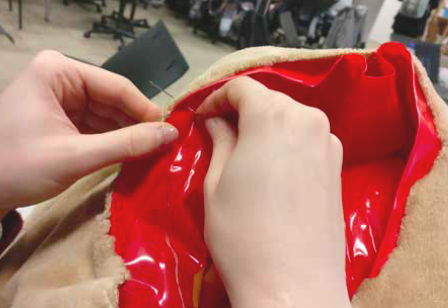
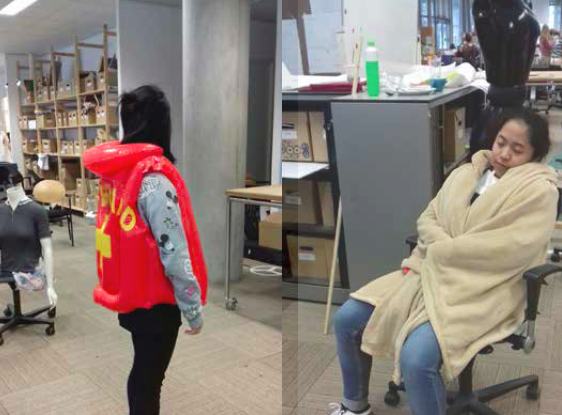
Second Iteration
After building the first mock-up, the aim for the second iteration was to improve on the concept, as well as layout the technical construction of the actuators (vibration) and integrate it into the wearable. So that the first prototype can be tested by the user during a feedback panel session(s).
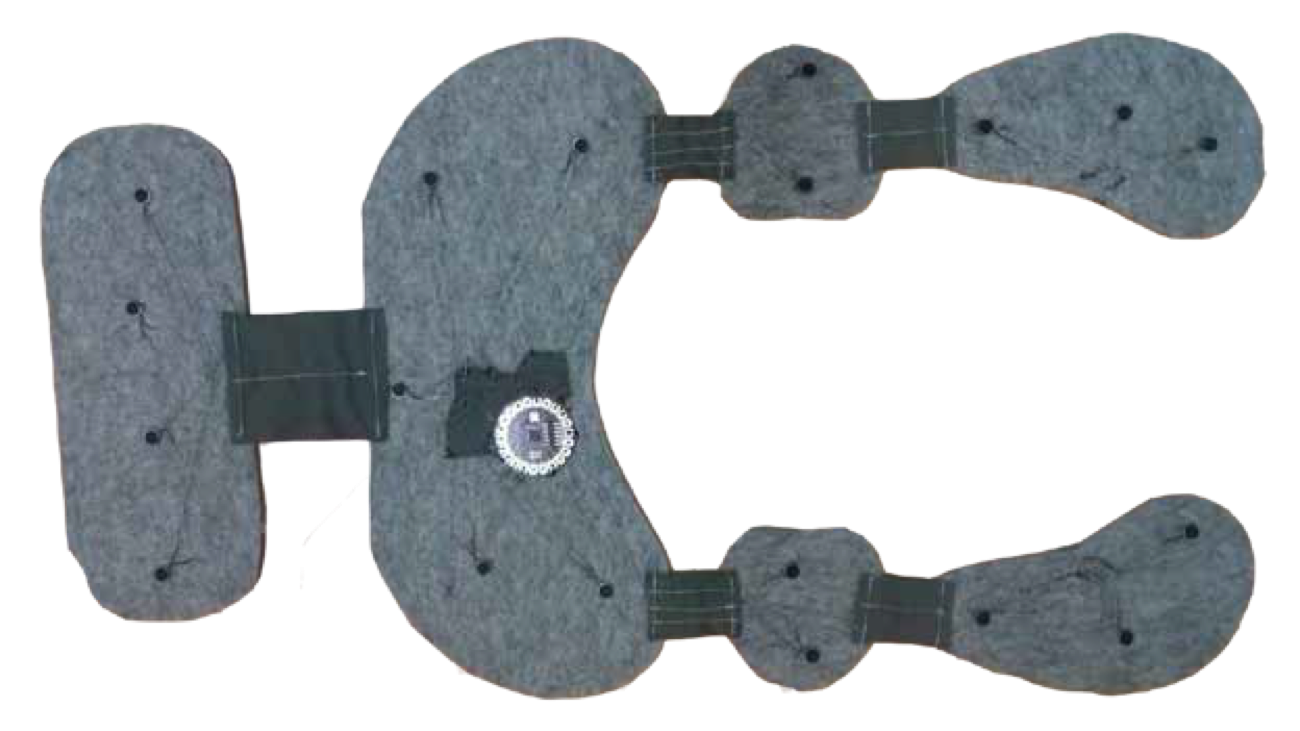
User Test Secon Iteration
The feedback session for the testing took place in two care homes, there were five female subjects within early and middle-stage dementia. The users were attracted to the familiarity of the vest’s color and material as most of them had the same type of clothing. In combination with the vibrating modules on the upper back, shoulders, and chest, the participants found the effect surprisingly relaxing and comfortable, as the three of them remarked. However, the vibration at the front chest modules was least favorable as the users said that it could make them uncomfortable. The way of wearing it still needs help and guidance from the caretaker. The velcro strip got stuck on the users’ clothes and there were too much force exerted while opening the velcro to take off the vest from the user which could possibly annoy them.



Final Design
Since the second prototype (which included the vibrating modules as actuators) was a success in what concerns the users’ direct and indirect feedback, for the next part the efforts have been concentrated on building a sensor that could retrieve data from the user’s body alongside a functional algorithm that could decode the input and use it to trigger the ‘hug’.



User Test Final Design
The third prototype user testing had been conducted once again in a care home for the elderly, the same one that was used before during iteration 2. The tests had been conducted with two participants (one of them having tested the previous prototype as well, but without remembering it) alongside their caretakers. Regarding the vest’s design, both of the test persons reacted positively to it, suggesting that they had a pleasant experience with the product. They were satisfied with the arched, feminine shapes and the pistachio green color that seemed to soothe them. It is known that stroking objects is an activity people with dementia often do in order to (unknowingly) calm themselves. Therefore, the bumpy texture of the vest provided them with additional fun interaction.

